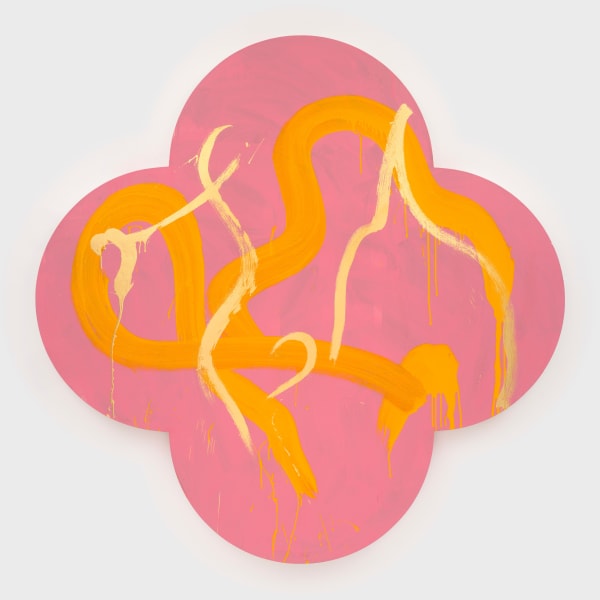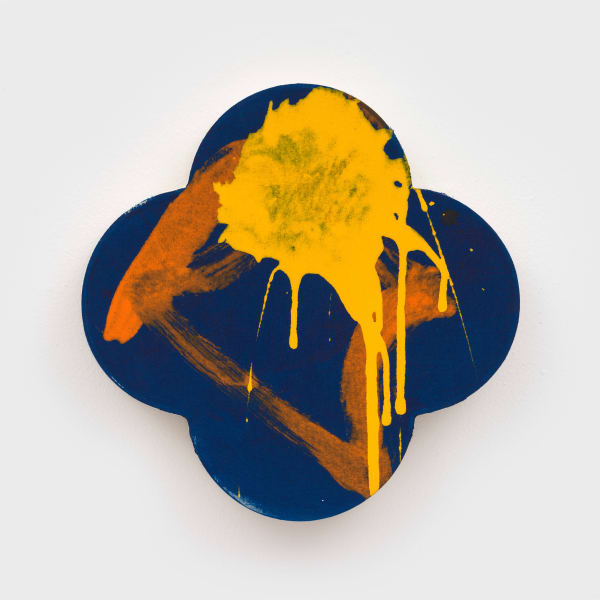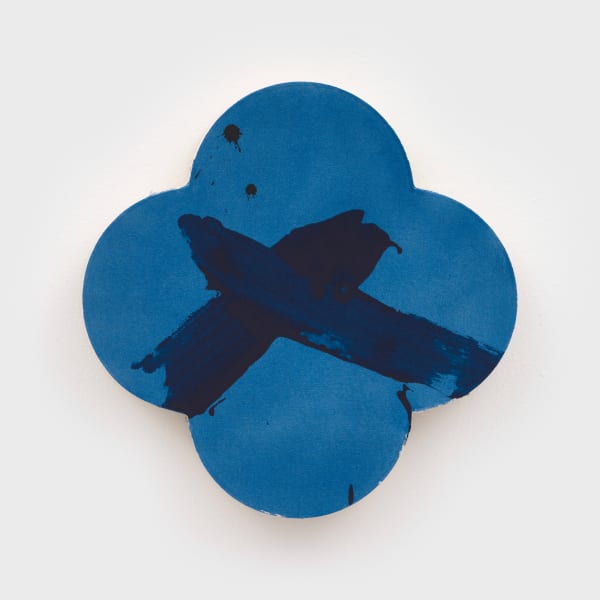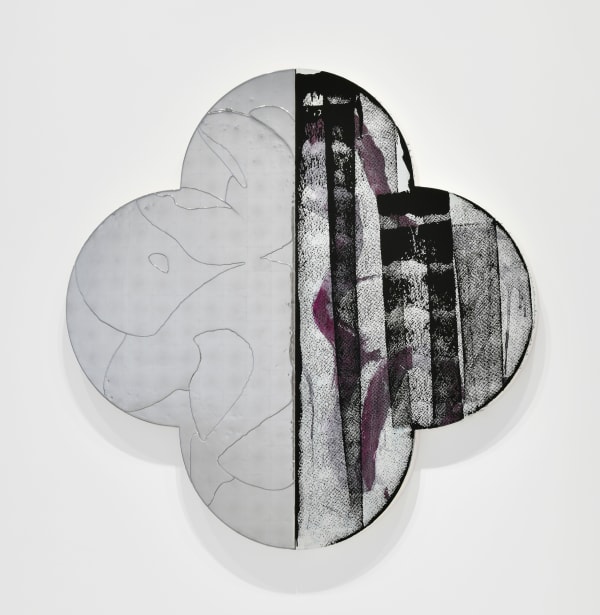The Open Door: Max Gimblett
Let’s consider the paintings to be figurative, non-figurative, or hard to figure, all at once. As if they were, you name it: Abstract Expressionist, Optical Art, Post-Painterly Abstraction, Minimalist, Pattern Painting, or Neo-Geost…or none of them. As if they had such-and-such a history or none.
A major exhibition of new work by Max Gimblett, one of Aotearoa’s most significant expatriate artists, is presented at Gow Langsford’s Onehunga gallery. Internationally renowned for his fusion of Eastern and Western artistic traditions, Gimblett returns with a vigorous suite of paintings that reaffirm his singular place in the history of contemporary abstraction. In this latest body of work, The Open Door, Max Gimblett returns to the canvas with a commanding series of vast multi-panelled works, along with his iconic quatrefoil shaped canvases—each a bold meditation on form, gesture, and the transcendent possibilities of abstraction. The artist’s signature materials, acrylic paint and precious metal leaf, are applied with a calligraphic immediacy that recalls the spontaneity of Zen brushwork, stemming from his Buddhist mushin (no mind) methodology.
Let’s consider the paintings to be figurative, non-figurative, or hard to figure, all at once. As if they were, you name it: Abstract Expressionist, Optical Art, Post-Painterly Abstraction, Minimalist, Pattern Painting, or Neo-Geost…or none of them. As if they had such-and-such a history or none. [1]
A major exhibition of new work by Max Gimblett, one of Aotearoa’s most significant expatriate artists, is presented at Gow Langsford’s Onehunga gallery. Internationally renowned for his fusion of Eastern and Western artistic traditions, Gimblett returns with a vigorous suite of paintings that reaffirm his singular place in the history of contemporary abstraction. In this latest body of work, The Open Door, Max Gimblett returns to the canvas with a commanding series of vast multi-panelled works, along with his iconic quatrefoil shaped canvases—each a bold meditation on form, gesture, and the transcendent possibilities of abstraction. The artist’s signature materials, acrylic paint and precious metal leaf, are applied with a calligraphic immediacy that recalls the spontaneity of Zen brushwork, stemming from his Buddhist mushin (no mind) methodology.
As per Curnow’s words above, Gimblett’s practice is inventive and genre defying, yet it is also deeply recognisable and quintessential to him. He could be considered both an expressive colourist and a monochromatic minimalist, depending on the artwork in question. The Open Door is an example of his mastery of colour; an intuitive process for the artist with each new colour being chosen in response to the previous layer. These works feature rich, jewel-like tones, and with precious metal leaf on almost every work, there is a sense of them being bestowed with the sacred and ancient despite their contemporary nature. Certain colour motifs hold particular importance to Gimblett, and he has returned to them throughout his career. One of these is shown here, the major work The Open Door, 2025, featuring red/white/black paint and his celebrated gold leaf. As the artist has stated, “Red/White/Black for me is birth, death, and rebirth—comes out of Karma and Rebirth by Christmas Humphreys, one of the most important texts of my life.” [2] By not having to consider what colours he would use, Gimblett’s full energy could be in the act of the gesture—showing how creative boundaries can sometimes create space for even greater freedom.
As with mushin informing Gimblett’s gesture, it is Le Corbusier’s Modulor Man that directs his relationship to scale. His smaller paintings, such as a fifteen-to-thirty-inch quatrefoil are head scaled, forty-to-sixty-inch quatrefoils are body scaled, and eighty-inch and above are monumental. Gimblett has noted, “These new large multi-canvas paintings are even larger, more horizontal than anything I’ve painted before, they’re on the scale of murals. The scale is definitely challenging but that’s the beauty of mushin, too, is that I cannot get caught up in that, I simply paint.” [3] The mammoth work Mother Pacific, 2025, stands at just over two metres high, and over eight metres wide, being made up of five panels. These canvases were painted simultaneously one at a time and altogether; the panels are separated by different ground colours, but united by Gimblett’s sweeping gestures stretching across the entirety of the surface. “Layers of brushed, rolled and poured paint developed into the surfaces that were joined so that I could approach the canvas in a free way and unite the painting with one or several gestures and then respond to that with the gilded strokes. Large paintings are just more painting, and I have made my life of painting, so it is beautiful for me.” [4] Balancing chaos with calm, each panel relates to the next as breath to breath: distinct, yet inseparable.
For Gimblett, a blank canvas is spiritual architecture—an open space for transcendence through the act of painting. These works may be viewed as thresholds, inviting viewers into a meditative state of looking, feeling, and being. In The Open Door, Gimblett reaffirms his position as a master of the gesture—one who paints not just what is seen, but what is felt, known, and remembered. “I want visitors to the Onehunga space to get as deliciously lost in these enormous new works as I got fully absorbed in making them.” [5]
Text by Imogen Cahill
References
[1] Curnow, Wystan. Max Gimblett, 2002. (Craig Potton Publishing in association with Gow Langsford Gallery), p. 21.
[2] Max Gimblett, artist statement, 2025.
[3] Max Gimblett, artist statement, 2025.
[4] Ibid.
[5] Ibid.



























